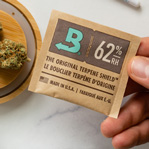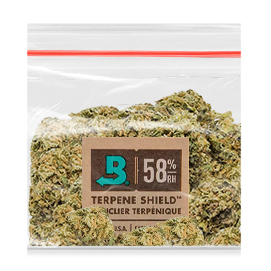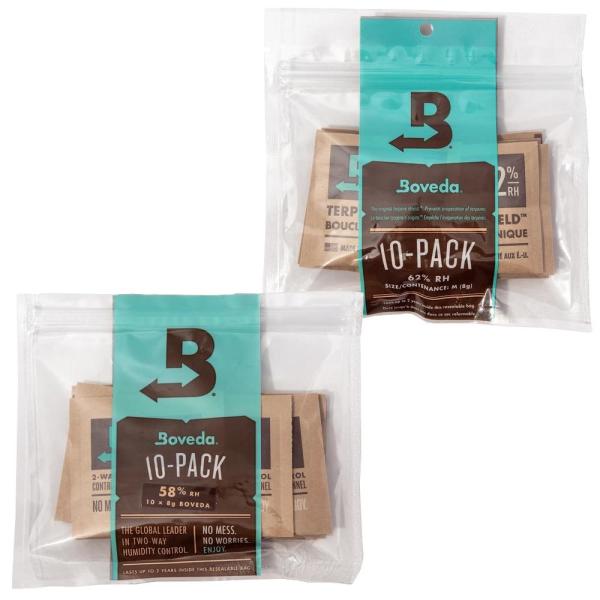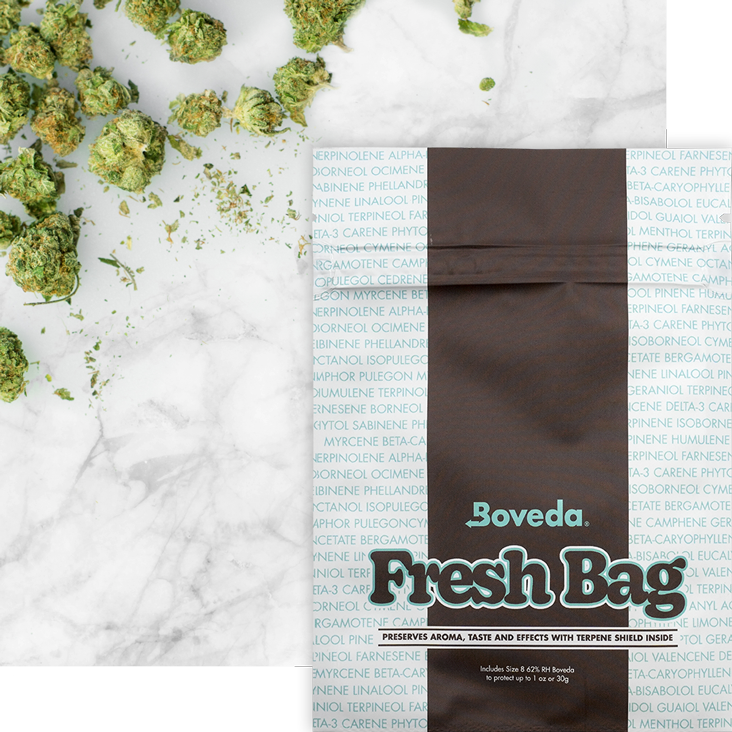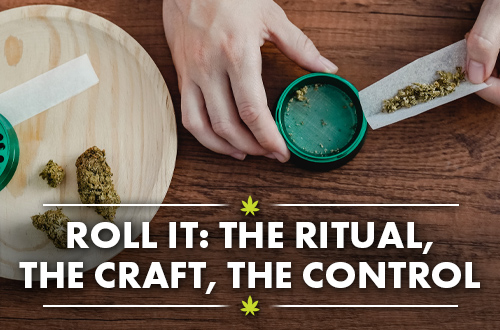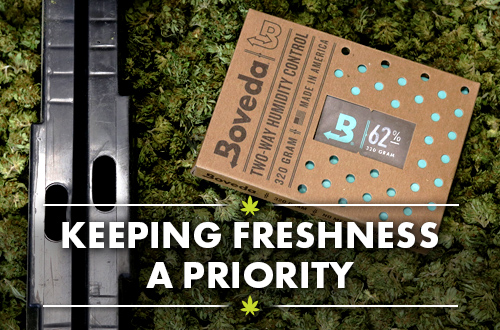
It’s a point of pride for growers, an indication of quality for distributors, and something for
cannabis enthusiasts to nerd out over when they get together to compare strains. But what
does it mean for cannabis to be sticky? What causes that slightly resinous texture in a bud?
Further, why does stickiness matter for cannabis, and how can consumers optimize their stash
for stickiness?
In this blog post, we’re talking all about sticky weed.
The Anatomy of Cannabis
Before we tackle trichomes, emphasize Boveda’s 2-way humidity packs, or offer best practices
for storing weed, we need to review a quick botany lesson.
Picture a female cannabis plant. Unlike a male plant with its pollen sacs, the female plant is lush
with flowering buds. Up the middle runs the stalk or main plant stem that supports all the
ancillary branches. From there, the plant gives way to nodes that branch out into stems. On
those stems, you find fan leaves (that classic, emblematic seven-point leaf) and sugar leaves,
giving way to an impressive cola, or cluster of buds.
It’s there on those buds that you’ll find a high concentration of trichomes, a dusting of resiny
crystal that—despite its small size relative to the rest of the plant—packs a significant
cannabinoid punch.
Resin, Trichomes and “Sticky Weed” Qualities
When we talk about sticky weed, we’re often talking about trichomes. Appearing when the
plant flowers, these miniature, resinous, mushroom-shaped glands (often measured in
micrometers) grow to protect the cannabis plant. As it happens, they also contain high
concentrations of cannabinoids and terpenes, accounting for a large portion of cannabis’
overall potency and flavor.
Because of their resinous quality, clusters of trichomes feel sticky to the touch. And because of
the outsized potency and flavor the trichomes pack, this sticky quality is synonymous with good
cannabis. The more trichomes, the stickier the bud, and the more enjoyable it will be from a
feeling and flavor standpoint.
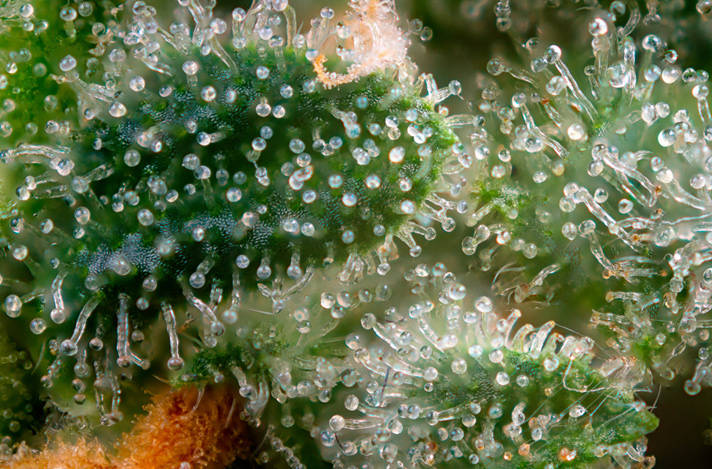
Does Sticky Matter?
Again, if you value cannabis for a) its flavor, b) its potency or c) all of the above, then stickiness
certainly matters.
It’s a tactile, empirical indication of quality. While the package may list the potency, we know
that cannabinoid potency can deteriorate over time, exposed to deleterious elements like open
air and sunshine. Therefore, package specs can be unreliable. Your fingertips, on the other
hand, never lie. If your bud feels sticky and resinous, you’re likely handling a potent, flavorful
bud. By contrast, dry weed likely features diminished potency and flavor.
It’s worth noting that, while sticky, twinkly, trichome-rich cannabis is ideal, don’t be fooled by
damp cannabis passing for sticky. Dry weed isn’t the only kind of bad weed. If you notice white
powdery patches as opposed to glistening, radiant trichomes, see gray/white fuzz, or feel
dampness to the touch, you may have moldy weed on your hands.
How to Maintain Sticky Weed
So, we don’t want dry cannabis; we don’t moldy cannabis; we want sticky, fluffy buds. How do
we accomplish this?
If you’re a grower, the process starts with stress training, plant nutrients, light, and learning
how to cure weed properly. But for typical buyers and consumers, the process starts with
proper storage.
Proper storage involves two central things: a sealed environment and humidity regulation.
Essentially, it’s the “humidor” principle—you’re attempting to minimize the desiccating effects
of open air, the flavor-bleaching effects of sunlight and the damaging effects of improper
relative humidity (RH). If that all sounds complicated on paper, you’ll be pleased to know it’s
straightforward in practice.
For your sealed environment, reach for any tight-fitting container. It could be Boveda’s
dedicated weed storage bags or cannabis containers. Or, if you’re in a DIY mood, it could be a
mason jar that you keep in a dark corner of the home. As long as it blocks sunlight and open air,
it’s a winner.
Take Control of Humidity
Next you need to create an environment within the sealed container of ideal
humidity—somewhere between 55% and 65% RH, a sweet spot for preserving trichomes and
terpenes. Boveda cannabis packs dial in the RH by emitting or absorbing moisture based on the
ambient humidity. It’s a reliable, hands-off, inexpensive solution to the problem of dry or moldy
cannabis. Packs are available in 58% RH for storing your cannabis, and 62% RH for reviving drier weed.
When you buy fresh cannabis, just pop a Boveda pack in your storage container and you won’t
have to worry about losing that sticky edge. Likewise, if you’ve come into some dry cannabis,
you can revive your bud with Boveda, resurrecting those sticky trichomes for a rich, flavorful
smoke.
In summary, sticky cannabis is more flavorful, terpene-rich, and potent—all thanks to those
powerhouse trichomes blanketing the surface of the bud. And all you need to do to
achieve/preserve sticky weed is locate a tight-fitting container, and a Boveda pack.

